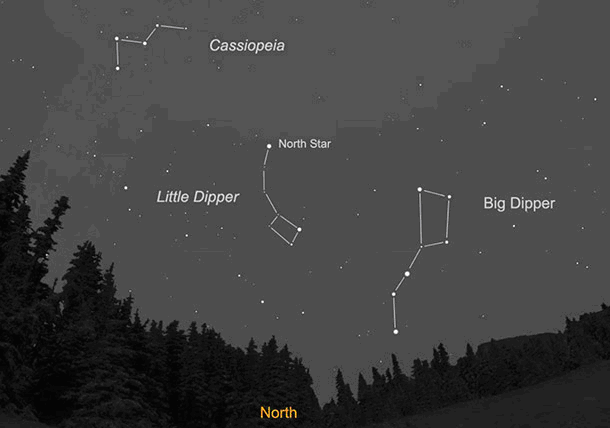Navigation
There are plenty of books and websites dealing with how to use a compass or a GPS for navigation, so this section will only deal with natural navigation.
I will cover direction by the sun – pretty obvious, the moon and also natural methods such as using trees.
The Sun
Ok, this is probably the most straight forward, so long as the sun is visible or the cloud cover is thin enough to allow shadows to form. The only time it’s difficult to tell the direction by the sun is at noon when the sun is over head.
Before noon, the sun will cast a shadow to the West, and after noon it will cast a shadow towards the East. Obviously heading towards the sun in the morning, you will be facing East, and after noon, you would be facing West.
To travel North in the morning, the sun would be on your right casting shadows to your left. In the afternoon this would be reversed.
To travel South in the morning, the sun would be on your left casting shadows to your right. In the afternoon this would be reversed.
The Moon
Using a crescent moon that is high in the sky, draw a line down to the horizon, and this will give a rough indication of South. It doesn’t work as well when the moon is close to the horizon.
It doesn’t matter whether the crescent is face left or right, as it works for both.
You can also tell East and West by the moon as it follows the sun and rises and sets the same way – rises in the East and sets in the West. The illuminated side of a crescent moon is the one facing the Sun. So if the bright side is on the right – that way is East.
If the moon rises before the Sun, the lit side is facing face, and then after midnight, it would be facing East.
The Stars
OK, this is probably the most problematic. Firstly, you need to be able to see the stars, and secondly, you need to be able to recognise a few constellations…
The four constellations you need to know are:
Cassiopeia which looks like a stretched out ‘M’.
The Plough or Big Dipper which looks like an old fashioned plough.
The Little Dipper – very similar in shape to the Plough.
Orion the Hunter.
So, to navigate, you need to draw a line between the middle of Cassiopeia and the top of the ‘pan’ of the Plough. About half way between the two is the end of the handle of the Little Dipper – this is the North Star. Draw a line down to the horizon, and that is North.

To find West, we need Orion the Hunter. Anyone familiar with a certain Sci-Fi film will know this constellation as it is the one accidentally discovered by a certain scientist to allow travel to another planet…
Orion rises in the East and sets in the West, and the belt, the three bright stars in the centre of the constellation, gives a pretty good East-West line


